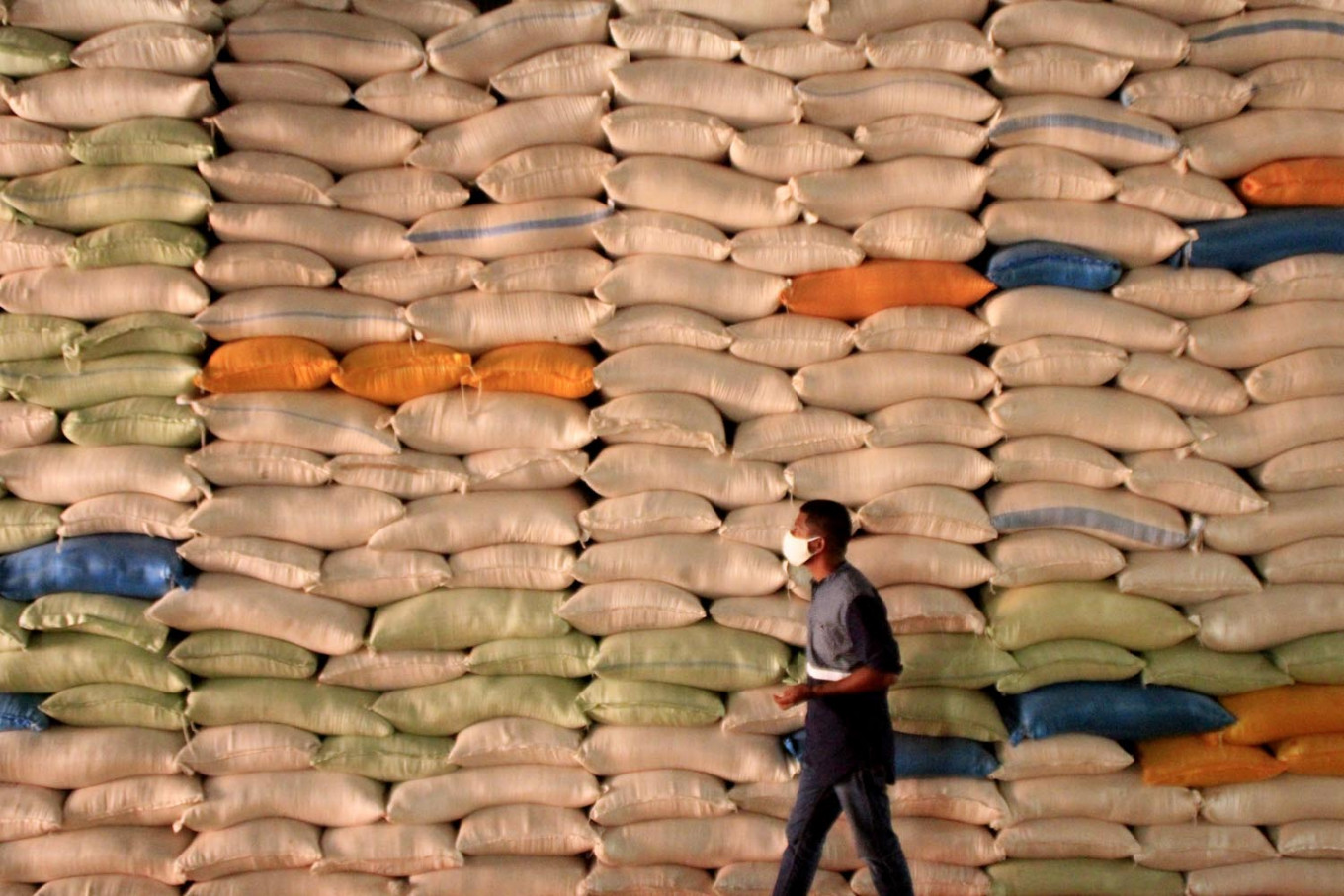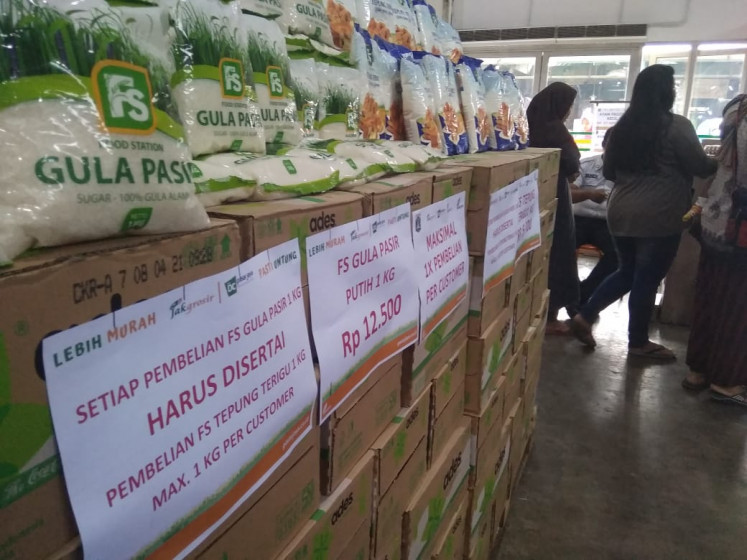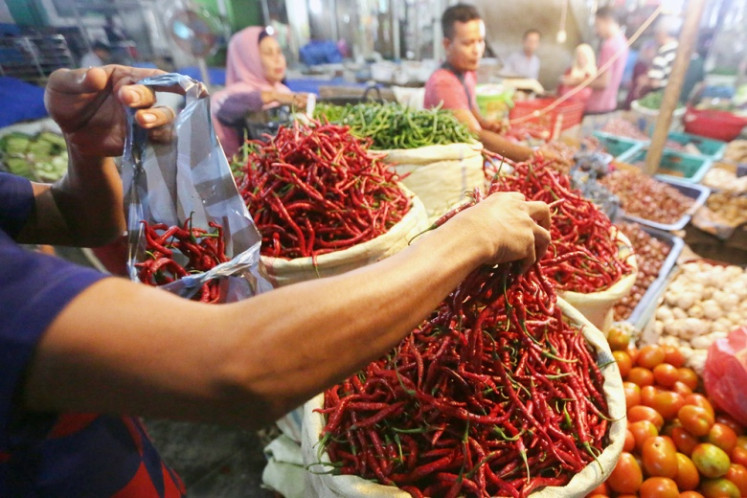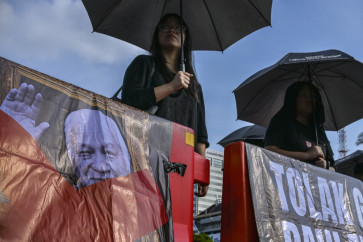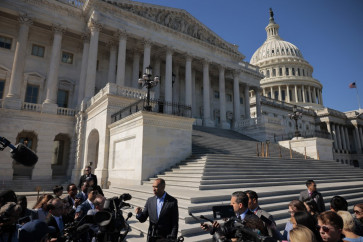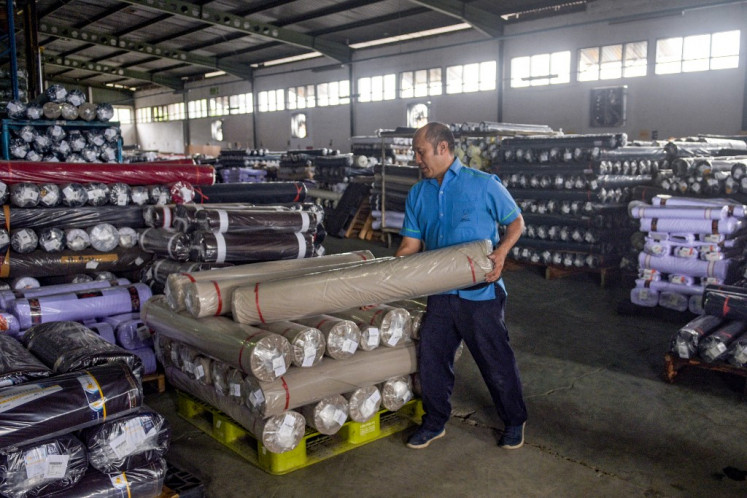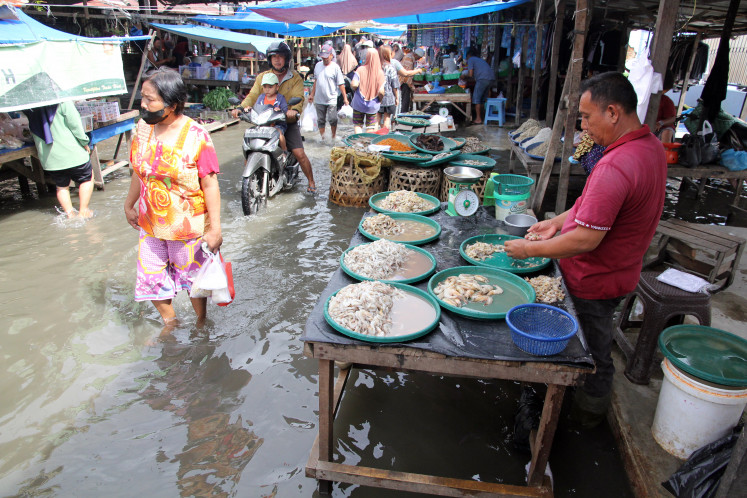Popular Reads
Top Results
Can't find what you're looking for?
View all search resultsPopular Reads
Top Results
Can't find what you're looking for?
View all search resultsGovernment optimistic about Ramadan food price stability
Food commodity prices are expected to be relatively stable throughout the upcoming holiday season of Ramadan and Idul Fitri, with poor demand over the past year leading to larger stockpiles.
Change text size
Gift Premium Articles
to Anyone
O
fficials and industry experts are optimistic that staple food prices will remain stable through the end of May, as the country has begun harvesting crops and distributing imported foods ahead the Ramadan-Idul Fitri holiday season, one of the largest in Indonesia.
Trade Minister Muhammad Lutfi said that the prices of rice, chili, sugar and other staple foods were expected to fluctuate around 2 percent on a daily basis during the holiday season. He added that the government would ensure the availability of basic food commodities by controlling the distribution of imported foods and monitoring farming activities.
The fasting month of Ramadan begins around mid-April and ends with the Idul Fitri holiday in mid-May. Ramadan is estimated to start on April 12, depending on when the new moon is sighted.
“So if prices fluctuate by 2 percent, we consider it stable, especially for commodities with high prices such as rice, sugar, and bulk and packaged cooking oil,” Lutfi told a virtual briefing on Monday.
“The Trade Ministry, on top of this, takes into account not only supply but also the yield [per hectare] at all production centers for rice, chili, onions and other commodities, the packaged cooking oil industry, as well as imported commodities such as beef and garlic,” he said.
Read also: Virus, climate change cause food shortages in parts of Indonesia
His statement reflects a turnaround from the reality in late April 2020, when most provinces saw shortages of several staple foods during Ramadan. At least 31 provinces reported a shortage of garlic while 30 provinces saw a sugar shortage that sent prices surging over the price ceiling.
Customers shop at wholesale food market Jakgrosir in Jakarta on March 12 in front of a sign that says "maximum one kilogram of sugar per person". The prices of several commodities such as sugar have increased sharply since mid February due to the shortage of supply (JP/Made Anthony Iswara)According to data from the National Strategic Food Price Information Center (PIHPS), the average price per kilogram of sugar at traditional markets increased to Rp 18,250 (US$1.27) last April, or 46 percent higher than the Rp 12,500 per kg price ceiling.
On Wednesday, the PIHPS recorded an average sugar price of Rp 13,350 per kg.
Lutfi said the sugar price was still hovering above the price ceiling, or HET, because the government had distributed only 88,811 tons of imported sugar.
The figure is 13.66 percent of the total sugar imports planned for January-May, as the Agriculture Ministry outlined during a hearing on Monday with the House of Representatives (DPR).
According to the ministry, Indonesia’s sugar consumption in January-May is estimated to reach 1.21 million tons, over half of which is to be covered by imported sugar.
Read also: Govt seeks to boost production, attract investment to control sugar price in 2021
“We expect that, with the estimated available stockpile, sugar prices for the public will stand at Rp 12,500 [per kg] in line with the HET,” said Lutfi.
Economist Rusli Abdullah from the Institute for Development of Economics and Finance (Indef) said that the average price of sugar was more stable this year than last year, when the onset of the COVID-19 crisis had created lower demand.
“This is because fewer people are eating out, so demand is declining,” Rusli told The Jakarta Post in a phone interview on Wednesday. “People are not traveling, going to restaurants or holding meetings,” he said, adding that this was causing the country’s sugar supply to increase.
Shoppers buy fresh chili at Peunayong traditional market in Aceh on Monday. The price of chili has increased from Rp 18,000 (US$1.32) per kilogram to Rp 32,000 per kg as many chili crops failed during the dry season. (Antara/Irwansyah Putra)However, the average price per kg of cabe rawit merah (red bird’s eye chili) has stayed high since the start of the year, with Lutfi saying that some production centers, including Blitar, Kediri and Tuban in East Java, saw 40 percent of their crops fail.
Indonesian Chili Agribusiness Association (AACI) chairman Abdul Hamid said that the crop failed due to heavy rainfall in February, which made the crops vulnerable to yaws. He said that the remaining 60 percent of the chili crop was expected to reach harvest.
Abdul said red bird’s eye chili was currently the most expensive type of chili, with prices rising to around Rp 130,000 per kg at markets and up to Rp 110,000 per kg at the farm level. Meanwhile, the per kg prices of other chilies had stabilized and were hovering between Rp 40,000 and Rp 55,000.
“I am predicting that the price of red bird’s eye chili will also fall to between Rp 40,000 and Rp 50,000 [per kg] in April,” Abdul told the Post by phone on Wednesday. “We hope our prediction is good.”
The Agriculture Ministry has projected that the bird’s eye chili stockpile would reach 448,902 tons in January-May to exceed estimated demand by 56,155 tons.
Agriculture professor Dwi Andreas Santosa of IPB University, affirmed that the country’s supply of staple foods was “relatively secure”, but cautioned that seasonal factors and recurring uncertainty in the agriculture industry could push price fluctuation beyond the government’s 2 percent range in either direction.
“All in all, the supply is relatively secure leading up to this year’s Ramadan,” Dwi told the Post on Wednesday. “Commodities that tend to see price increase are shallots, chicken meat and chicken eggs,” he added.

